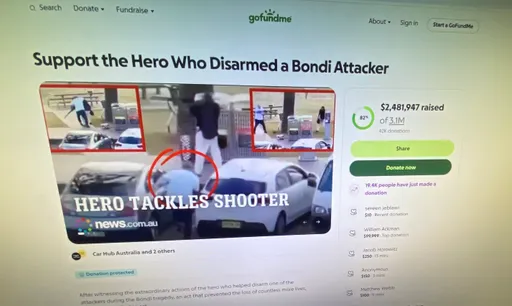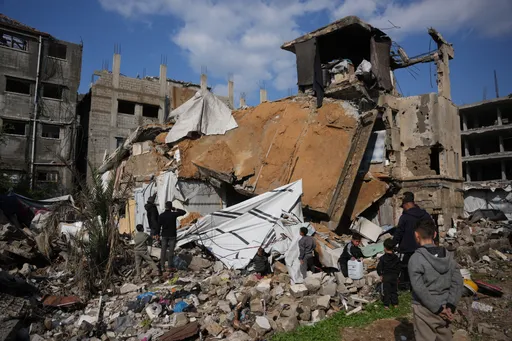On Sunday, September 3, 2017, the Democratic People's Republic of Korea (DPRK - North Korea) staked its claim to join a very exclusive and very dangerous club, states with hydrogen bombs.
The nuclear test, measured on seismic monitors, caused an "explosion" of 6.3 magnitude – larger than any previous tests – and so powerful that a Chinese scientist warned the mountainous blast zone could implode leaking radiation across the region.
Observers monitoring satellite imagery of Punggye-ri military testing site below Mount Mantap spotted landslides caused by the explosion of the bomb, which analysts say had a yield of between 50 and 120 kilotons, at least eight times the size of the bomb dropped on Hiroshima during WWII.
The test showed once again that decades of sanctions and coercion have failed to deter North Korea from acquiring a nuclear weapons' capability.
Every time the isolated state tests a bomb, or delivery system, it raises global concerns.
But shock is the only word to describe the effect of Pyongyang's claim to have successfully tested its first thermonuclear device (also called a hydrogen bomb or H-bomb), as countries in the region and capitals of leading powers scrambled to respond.
Stocks stumbled in Asia and the United States.
At the UN, the US and its allies pushed for harsh sanctions against the DPRK, while Pyongyang promised more "gift packages" for the US.
Russia warned that if the crisis escalated it could provoke a "planetary catastrophe."
The test was Pyongyang's sixth, the first being in 2006 – five atomic (fission) bomb tests and the claim of a hydrogen (fusion) bomb test on Sunday.
Taking Pyongyang's statement at face value, how did it get there?
Korean War of 1950-53
The roots of the current crisis and how North Korea acquired its nuclear technology lie in the chequered history of the Korean Peninsula.
North Korea and South Korea were once one country. Japan invaded the peninsula and made that country a protectorate of the Empire of Japan in 1910, ruling it for the next 35 years.
At the end of World War II, Japan surrendered to American forces in southern Korea and to troops of the Soviet Union in northern Korea. Elections to unify the two parts were to be held by US and Soviet administrators in the south and north.
However, disagreements erupted as Washington called for a democracy and Moscow for a communist state to be established on the peninsula.
As a result of the falling out between the WWII allies, separate elections were held and two leaders chosen, effectively creating two separate nations in 1948.
Peace on the peninsula was short-lived. In 1950, the North invaded the South. A United Nations force led by the US backed the South. The Soviet Union and China backed the North. It was a brief but brutal conflict. Close to three million lost their lives before fighting halted in 1953 with an armistice. No official peace treaty was signed, and the two countries are technically still at war.
The kernel of the current crisis traces back to the willingness of the US to use nuclear weapons against the North, just as it had against Japan in WWII, to put an end to the conflict if negotiations failed to produce an armistice.
“US President Dwight D Eisenhower, in his memoirs, said he came into office prepared to use them, if necessary, to break the deadlock,” according toThe New York Times, which publisheddeclassified US papers on the war.
Since then, the United States has maintained a military presence in South Korea "as a strong deterrent against provocations from North Korea" and still remains technically at war with the North.
During the war, the US carpet-bombed the DPRK, an event never forgotten in the North.
"The US air force subjected North Koreans to three years of 'rain and ruin'. It was a living nightmare – one that still haunts the country to this day," Bruce Cumings, author of The Korean War: A History, argued recently in The Guardian.
Soviet Union's help
Three years after the war ended, North Korea and the Soviet Union signed agreements on nuclear research.
"The agreement enabled about 30 North Koreans to go to the USSR (Union of Soviet Socialist Republics) for training in nuclear technology," according to the Nuclear Threat Initiativechronology, thus starting Pyongyang's quest for nuclear capability.
The USSR in 1964 also provided the DPRK with a small experimental nuclear reactor, which at its insistence, was put under the inspection of the International Atomic Energy Agency (IAEA) so that the reactor was not misused to develop weapons, despite Pyongyang not being party to the Nuclear Non-Proliferation Treaty (NPT).
Meanwhile, in 1957 the Eisenhower administration approved NSC 5702/2, a policy which included a provision for the stationing of nuclear weapons in South Korea, according to Cumings, in Korea's Place in the Sun (p. 492).
In 1958, the US deployed nuclear weapons to South Korea for the first time.
During the Korean War, China had emerged as North Korea's staunchest ally. Mao Zedong ordered his troops to cross the border in November 1950, pushing back UN forces from close to the Chinese border to the 38th parallel, the current ceasefire line separating the two countries today.
But when Pyongyang asked China to provide it with atomic weapons in 1964 and and then again in 1974, Beijing refused. The DPRK's supreme leader Kim Il-sung – grandfather of present-day leader Kim Jong-un – then decide to develop an indigenous and independent nuclear weapons programme.
Nuclear black market
North Korea started collecting from Europe "sensitive nuclear technologies" in the 1970s and 1980s, according to a report in The Atlantic.
"They [North Koreans] were interested in spent fuel reprocessing, plutonium, R&D [Research and Development]. At one point they [North Korean agents] went to a meeting in Vienna and chatted up some people from Belgium who had a design for a plutonium separation plant," the report said.
“… eventually over a period of 10 to 15 years they set that technology up, they deployed the plant, they started to experiment with it and use it...” Mark Hibbs, a senior fellow with the Carnegie Endowment for International Peace, told The Atlantic.
By 1981, North Korea had developed a self-reliant nuclear programme.
Pyongyang had not forgotten its other Korean War ally. In 1985, it asked Moscow for nuclear reactors for civilian use. Russia agreed to provide four nuclear reactors to Pyongyang. North Korea also signed the NPT, in December 1985, at the insistence of Washington, which with Moscow was 'captain' of the nuclear club.
Despite signing the NPT, Pyongyang did not complete a safeguards agreement with the IAEA, pointing to 100 nuclear warheads the US maintained in South Korea, although the Bush administration did remove them in 1991.
In the same period, North Korea was developing long-range missile know-how, and by 1986 it had built another reactor, one that enriched plutonium.
The US imposed "missile sanctions" on North Korea in 1992.
At the same time, the IAEA noted discrepancies in the reports submitted by North Korea on its nuclear programme. It said it could not guarantee that North Korean nuclear material was not being diverted for non-peaceful uses, according to the Arms Control Association.
In 2003, Pyongyang pulled out of the NPT.
It was also reported in that year to have an "untested ballistic missile" capable of hitting the United States. And CIA Director George Tenet said the DPRK had produced one, possibly two, plutonium-based nuclear weapons.
In October 2006, North Korea conducted the first test of a plutonium-based nuclear bomb.
Shift to uranium-based weapons
But an atomic bomb was not enough for Pyongyang. The country’s scientists were seeking to move away from plutonium-based to uranium-based weapons.
The difference between the two radioactive elements is the difference between an atomic (fission) and a hydrogen (fusion - or thermonuclear) bomb.
Pyongyang started a high stakes game of cat-and-mouse with the international community.
According to Nuclear Threat Initiative, North Korea's military trained the Congolese army in exchange for access to uranium ore.
Contact was made with a prominent Pakistani nuclear scientist.
All in the name of producing weapons-grade uranium that could be kept hidden from US satellites and IAEA inspectors.
The game was exposed when Pakistan in 2004 put Abdul Qadeer Khan, the 'father' of Pakistan's own nuclear bomb, under house arrest for selling nuclear know-how to North Korea in exchange for access to DPRK's ballistic missile know-how for Pakistan's weapons' programme.
But the game was far from up. Proliferation experts like Mark Fitzpatrick argue that Pyongyang's links with the nuclear black market extended well beyond Pakistan.
"There have been suggestions that firms in Japan and Europe sold North Korea material and equipment related to a gas centrifuge programme during 1988-89," concluded Fitzpatrick in Nuclear Black Markets: Pakistan, A. Q. Khan and the Rise of Proliferation Networks.
In 2016, an Indian institute came onto the UN radar after revelations that it trained North Korean scientists.
Components for the DPRK's nuclear programme are also reported to have come from the UK, Canada and other countries, routed through China, Pyongyang's longtime ally and trading partner.
"Dead people don't need money"
The history of North Korea's nuclear programme started when the Korean War convinced its leadership that it needed atomic weapons to defend itself from the United States.
What appears to have changed is that the current North Korean leadership now sees these weapons as necessary to the country's survival.
"North Korean leaders know that dead people do not need money, and they believe that without nuclear weapons they will be as good as dead," argued Andrei Lankov, director at Korearisk.com, in a recent CNN report.
"They see themselves as vulnerable to both foreign attack – the fate of former Iraqi dictator Saddam Hussein – or killed in a domestic rebellion assisted from overseas – the fate of former Libyan leader Moammar Gaddafi, the only dictator in history who agreed to abandon his nuclear program in exchange for promised economic benefits."
According to Benjamin Katzeff Silberstein, who co-edits North Korean Economy Watch, that offers news and analysis on the country's economy, "North Korea has always been weary of US and allies trying to influence its politics and would rather take care of the protection of the regime alone than rely on others."
"The nukes have also often been used as a bargaining chip to acquire financial resources from the international community. But in the 2000s, and particularly after the ousting of Muammar Ghaddafi in Libya in 2011, it hasn't been an option for North Korea to completely give up their nuclear weapons, and they would be unlikely to fully believe any promises made by the west in negotiations,” he told TRT World.
"Eventually, North Korea hopes that they will be a nuclear power which, although perhaps not fully accepted by the international community as a nuclear state, will not be challenged and squeezed in the same way they are now."
























